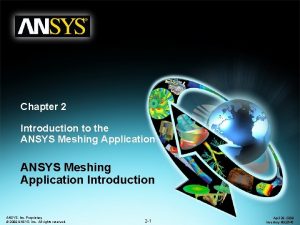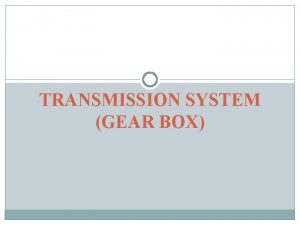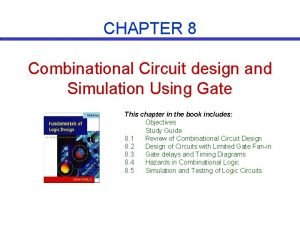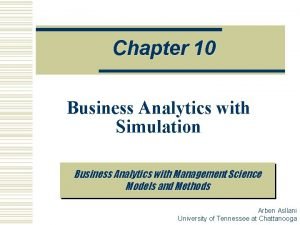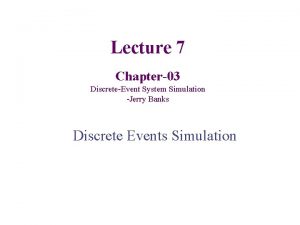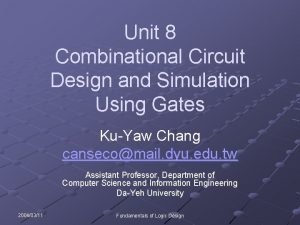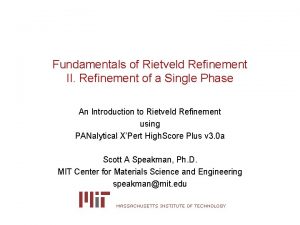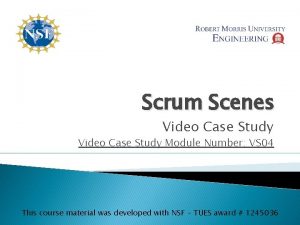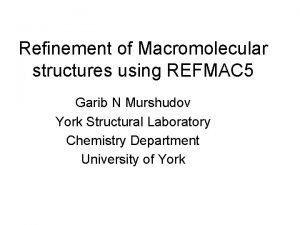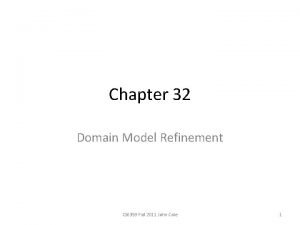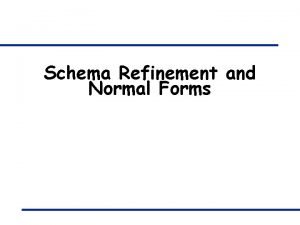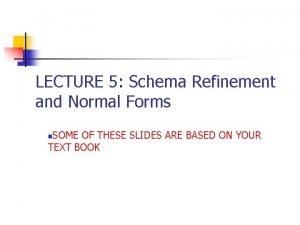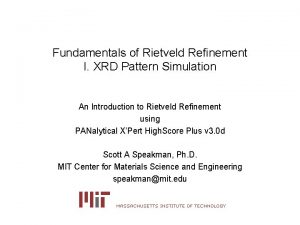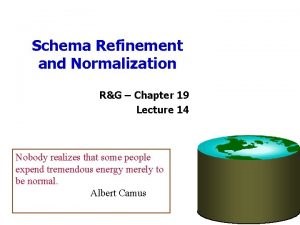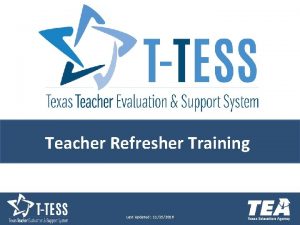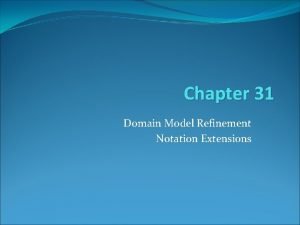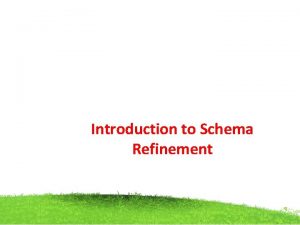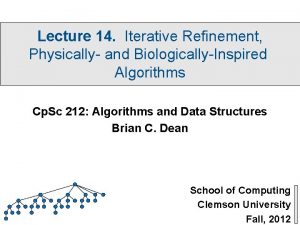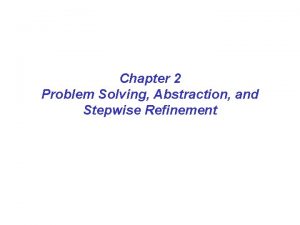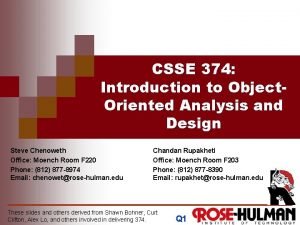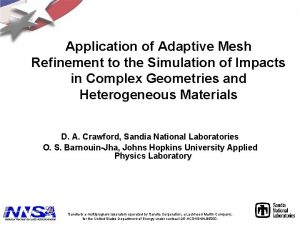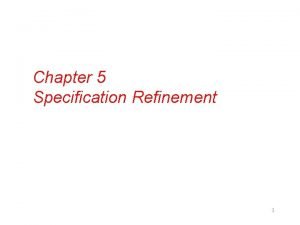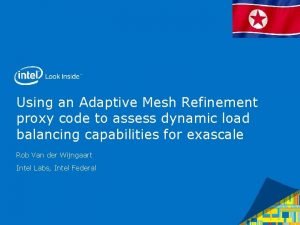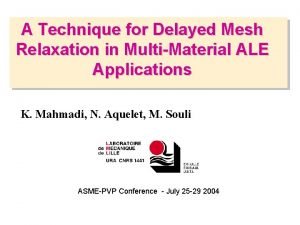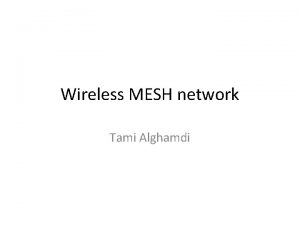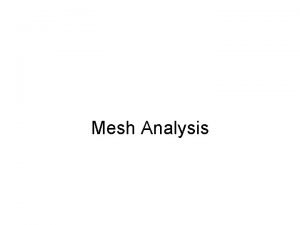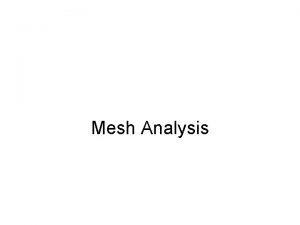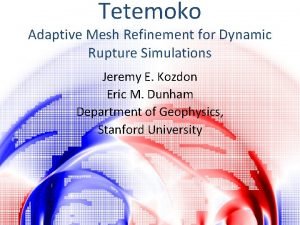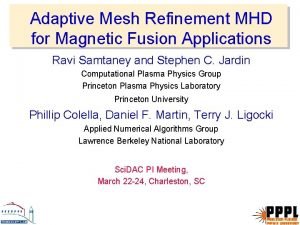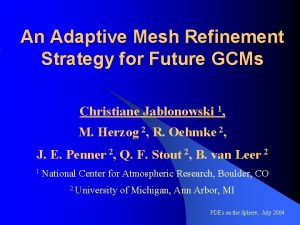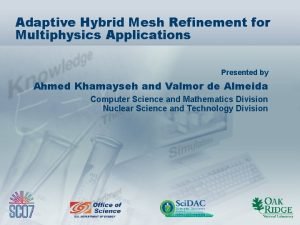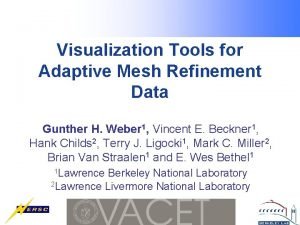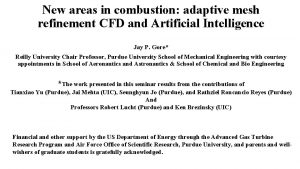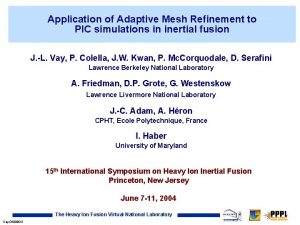Simulation of Multimaterial Flows Using Adaptive Mesh Refinement




















- Slides: 20

Simulation of Multi-material Flows Using Adaptive Mesh Refinement Technology M. Povarnitsyn, K. Khishchenko, P. Levashov, A. Zakharenkov Joint Institute for High Temperatures RAS, Moscow, Russia povar@ihed. ras. ru New Models and Hydrocodes for Shock Wave Processes in Condensed Matter, Lisbon – Monte Estoril, Portugal 18 -23 May, 2008 1

Outline 1. Introduction 2. Numerical model • Basic equations • Interface reconstruction • Equation of state • Adaptive mesh refinement 3. Results of simulation 4. Conclusions and future plans 2

Numerical model • Multi-material high-order Godunov’s method in Eulerian form (Miller & Puckett, J. Comp. Phys. , 1996) • Interface reconstruction algorithm (Youngs) • Multiphase equations of state (Khishchenko) • Adaptive mesh refinement (Chombo, LBNL) 3

Multi-material Eulerian hydrodynamics f 2 f 1 Mixture model f 3 4

Interface reconstruction algorithm 2 D 3 D j+1 U* t j U* (a) (b) (c) (d) j-1 i i+1 Symmetric difference approximation or some norm minimization is used to determine unit normal vector (e) D. Youngs (1987) D. Littlefield (1999) Specific corner and specific orientation choice makes only five possible intersections of the cell 5

Semi-empirical thermal EOS Metastable EOS Stable EOS bn bn sp “instant relaxation” 0 “frozen relaxation” kinetic models 6

Ti - Al impact at 10. 4 km/s Experiment: Chhabildas et al. Int. J. Impact. Eng. 2006; 33: 158 -68. V=10. 4 km/s Ti Al 7

Thermal decomposition of metastable liquid + gas Metastable liquid separation into liquid-gas mixture V. P. Skripov, Metastable Liquids (New York: Wiley, 1974). 8

Model of homogeneous nucleation 0. 9 Tc<T<Tc V. P. Skripov, Metastable Liquids (New York: Wiley, 1974). 9

Mechanical spallation (cavitation) P P P liquid + voids Time to fracture is governed by the confluence of voids 10

Spallation criteria Minimal possible pressure P P < -Y 0 Energy minimization P P D. Grady, J. Mech. Phys. Solids 36, 353 (1988). 11

Adaptive mesh refinement (AMR) 12

Recursive integration in time Δt /4 Δt/2 Δt /4 Δt /2 Δt /4 13

Pb on Al impact at 5 km/s 14

Evolution of meshes 15

Pb on Al impact at 5 km/s Pb on Al at 5 km/s 5 levels grid 2048 х 2048 12 procs 16

Multi-material Godunov’s framework with AMR Pb, Al and air 5 levels grid 1024 х 1024 10000 particles 100 mkm 12 procs 17

AMR effectiveness 9000 Run time, s 8000 7000 6000 AMR with 3 levels 5000 Equivalent mesh 4000 3000 2000 1000 0 Physical time, mks 0 0. 2 0. 4 0. 6 0. 8 1. 0 1. 2 Uniform grid AMR Benefit Run time, min 134 36 3. 7 Peak memory usage, Mb 31 18 1. 7 Mean memory usage per step, Mb 28 7 4. 0 18

Two-temperature multi-material Eulerian hydrodynamics Basic equations Mixture model 19

Conclusions and Outlook • Implementation of high-order multi-material Eulerian model into AMR was performed • Usage of metastable and stable equations of state allows to take into account kinetics of decomposition of metastable phases • Time-dependent criteria of cavitation in metastable liquid state were introduced into hydrodynamic model • Implementation of new physics (thermal conductivity, electromagnetic field, ionization) is underway 20
 Application
Application Constant mesh gear box
Constant mesh gear box Find v
Find v Combinational circuit design and simulation using gates
Combinational circuit design and simulation using gates Business analytics simulation
Business analytics simulation Jerry banks simulation
Jerry banks simulation Combinational circuit design and simulation using gates
Combinational circuit design and simulation using gates Fundamentals of rietveld refinement
Fundamentals of rietveld refinement Backlog refinement
Backlog refinement Jelly body refinement
Jelly body refinement Domain model refinement
Domain model refinement Schema refinement and normal forms
Schema refinement and normal forms Schema refinement and normal forms
Schema refinement and normal forms Fundamentals of rietveld refinement
Fundamentals of rietveld refinement Purpose of normalization or schema refinement
Purpose of normalization or schema refinement Ttess triangle
Ttess triangle Domain model refinement
Domain model refinement Introduction to schema refinement
Introduction to schema refinement Iterative refinement
Iterative refinement Stepwise refinement definition
Stepwise refinement definition Refinement
Refinement
